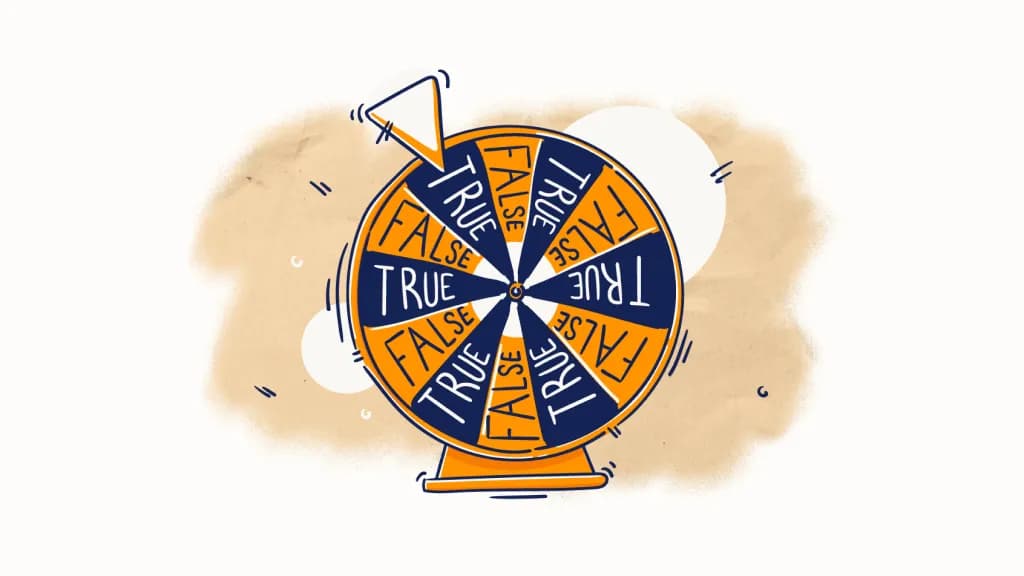What are the most common Misconceptions about Innovation Management?
Stories are published daily about how entrepreneurs, startups and large organizations disrupt the market with groundbreaking ideas. But this influx of innovation content, although undoubtedly inspiring, does little to guide your innovation strategy in the real world.
Despite what publishers would have you think, companies like Tesla and Google didn't build success off the back of eureka moments or opportunistic epiphanies. No. They leveraged comprehensive, risk-reduced innovation strategies that performed over time.
In the following article, you'll learn why most perceptions of innovation are false and how successful, real-world organizations approach innovation to secure long-term success.
Misconception #1: Innovation is all about ideas
It's easy to romanticize great ideas. We all want to believe our organization is just one groundbreaking idea away from eternal affluence. This is why we're constantly sold success stories about anomalous entrepreneurs and the "tried-and-true" strategies they used to secure long-term market viability.
Most companies are usually good at idea generation.
It's the easiest part of innovation. But with corporate gurus insisting that great ideas are the key to success, it's easy to overlook the vast quantity of ideas that often lead to failure and why that happens.
That's because ideas that fail ruin the narrative. Nobody likes to know the reality: that the vast majority of ambitious new ideas fail; that successful innovation results from careful strategy and perseverance.
Most companies are not so good at validating, testing, and implementing ideas.
Even if you've managed to unearth a groundbreaking idea capable of changing the future of your organization, chances are it will fizzle out and die if a well-defined process does not support it. Failing to usher ideas through a systematic innovation process is one of the greatest barriers organizations face in their innovation efforts.
You can secure long-term control over markets by innovating consistently across multiple areas. By implementing tailor-made innovation processes, you can identify pertinent ideas that solve real problems, mitigate risks and maximize your return on innovation.
Misconception #2: Innovation is exclusively for New Product Development (NPD)
Because new products are manifested as tangible entities, it's easy to confuse new offerings with the sum of innovation. But successful innovation occurs in every aspect of your organization, not just new product development.
Focusing all your efforts on new products is an extremely risky strategy. People are adverse to change. They reject it without thought, preferring to stick to what they know.
Some will say, "good innovators are risk-takers" but nothing is further from the truth. Long-term viability depends on your ability to mitigate risk as much as possible and simultaneously focus on smaller, more dependable improvements that compound over time.
Successful companies look beyond products to leverage their full innovation potential. They do this by diversifying their innovation portfolio and spreading the assumed risk across multiple business areas. Other avenues for innovation include network, structure, process, and channel innovation, among others.
Misconception #3: Innovation is reserved for innovation professionals
The idea that innovation should be reserved for innovation professionals is flawed and results in a myopic view leading to limited innovation strategies and processes. As discussed in Misconception #2, successful innovation requires a 360-degree approach to respond quickly to fundamental changes in the industry. The quicker you react and are more vigilant, the more likely you are to outperform your competitors.
To outpace the competition, your innovation strategy needs to tap into an extended knowledge base that goes beyond the perspective of innovation professionals. An open-innovation approach harvests the experiences and knowledge of a wider network, including employees, customers, partners, and other stakeholders. It's this open-innovation approach that's led to the success of major organizations like Apple, Google and Tesla.
This approach diversifies your innovation strategy with new perspectives, allowing you to recognize idea shortcomings or advantages quickly. It also places decision-making power into the hands of those the problem directly affects. For example, your employees - those who carry out recurring daily tasks - are more aware of the things that plague standard processes or make your customers unhappy than innovation professionals could ever be.
Misconception #4: Innovation is only about major breakthroughs
Mavericks—the people who typically come up with groundbreaking ideas—are hard to find. And identifying the revolutionary ideas they come up with is harder than it looks.
Because successful groundbreaking ideas are influenced by a myriad of external factors such as politics or emerging demographics, it's impossible to know whether the success can be attributed to the sheer innovativeness of an idea or whether it's simply a case of "right place, right time."
The outlying examples you read about in magazines shouldn't be used as a roadmap for your innovation strategy. Too often, success stories are the result of survivorship bias and don't paint a realistic picture of what innovation really entails. Your chances of disrupting the market with a groundbreaking idea are small. Groundbreaking innovation should form part of your innovation strategy, but not all of it.
Misconception #5: Innovation has to come from the top
Hierarchical setups are useful for delegating responsibility and creating a sense of belonging, but they can spell disaster for your innovation efforts. Traditionally, major innovation decisions have been made by those at the top and implemented by those at the bottom. Simple.
However, because senior staff are shackled by KPIs like profit margins and customer acquisition costs, they're in no position to make innovation decisions. Innovation, as Scott Berkun, author of The Myths of Innovation puts it, "requires a willingness to defy convention." Most higher-ups have achieved success through carefully navigating the corporate world with conservative decision-making—traits of little value when it comes to innovation.
And what understanding does a CEO have of the numerous problems occurring at ground level? Does he sympathize with the pain points of the customer? Does she witness the bottlenecks that clog up day-to-day processes? No, of course not.
The people capable of identifying key challenges are those who encounter them daily. By opening your innovation strategy to a broader network, you diversify your pool of collaborators and discover new innovation possibilities. With this new perspective, it's easier to prioritize your investments based on predicted results.
Misconception #6: Innovation requires big bets
Every action you take in business involves a level of risk. Consider recruitment, for example. When hiring a new employee, you're betting that person will at least adequately fulfill the open position. There's no certainty, but you've done everything possible to maximize the likelihood of success.
It's a risk, but a calculated one. And innovation should be treated with that same level of trepidation. Your innovation strategy must be diverse and supported by tailor-made processes. These processes should contain steps designed to mitigate as much risk as possible such as idea validation, testing and prototyping.
The level of risk surrounding an idea will dictate your approach and predicted outcomes. Regardless of whether an idea is likely to succeed or not, it can still fail, even if you've mitigated as many risks as possible. Naturally, small bets are more likely to succeed than big bets, and it's these incremental improvements that garner long-term viability.
In Peter Sims' book Little Bets: How Breakthrough Ideas Emerge from Small Discoveries, Sims emphasizes the importance of small, continued innovations. He says, "Experiment: Learn by doing. Fail quickly to learn fast. Develop experiments and prototypes to gather insights, identify problems, and build up to creative ideas, like Beethoven did in order to discover new musical styles and forms."
Your innovation portfolio should be as diverse as possible to help reduce the impact of inevitable innovation failures. Organizations that risk everything on one big idea without being open to the changing context can soon find themselves filing for bankruptcy.
Diversify your innovation efforts with InnovationCast
Many companies fail to stay ahead of competitors because their innovation strategy isn't firing on all cylinders. Before they know it, they're spinning their wheels, creating more and more products for fewer and fewer customers.
InnovationCast is the all-in-one innovation management software that allows you to organize, manage, validate and implement innovations across all levels of your business.
If you're interested in learning more about how InnovationCast can help your business, simply schedule a non-binding product demo today.




